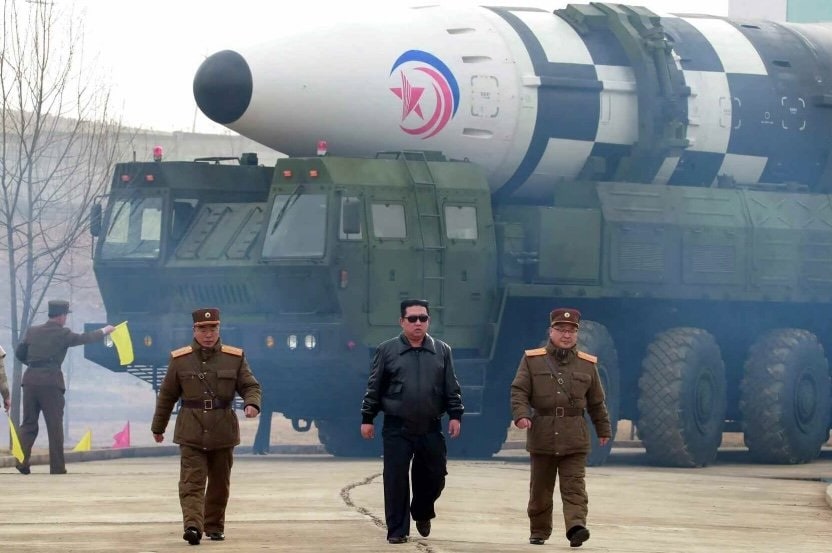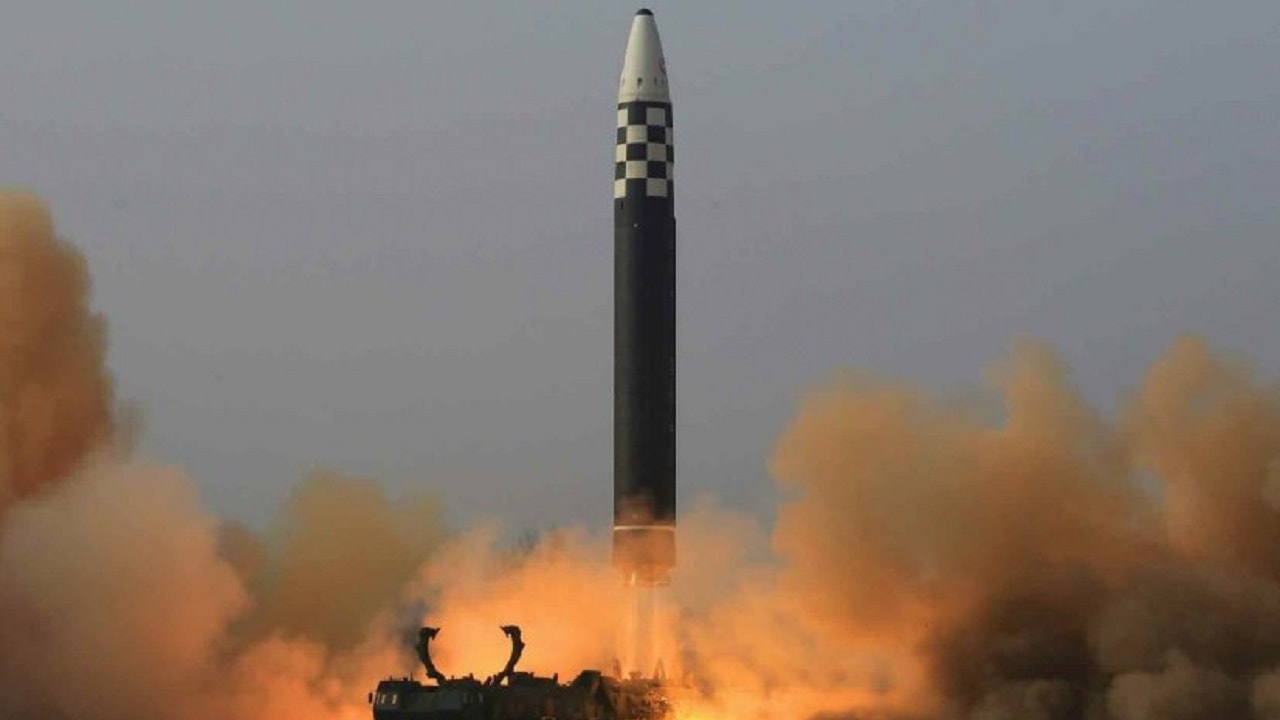The Deeper Meaning Behind North Korea’s ICBM Test: On Thursday, North Korea carried out its first full-scale intercontinental-range ballistic missile (ICBM) test since November 2017. Like its three previous tests—two in July 2017 and one in November that year—this test saw a large missile launched thousands of kilometers above the Earth. This form of “lofted” testing doesn’t send the missile halfway across the globe, but allows North Korean engineers to demonstrate that such a capability is well within reach.
The new missile was revealed to be the Hwasongpho-17–but more commonly referred to in most media as the Hwasong-17 ICBM–a missile first seen at a military parade in October 2020. This is a large liquid-propellant missile that’s launched from a road-mobile missile. This missile is notably so large that its test marks a milestone in global missile history: this is without a doubt the largest liquid-propellant missile launched from a road-mobile launcher anywhere ever.
The missile, which flew for some 71 minutes, reached a height of 6,200 kilometers and covered 1,080 kilometers on the earth’s surface. These flight characteristics indicate that it would be able to carry a moderately heavy payload to any target in the contiguous 48 U.S. states, all the way to the southern tip of Florida. The remarkable four-chamber clustered liquid propellant engine generates sufficient thrust to also allow the missile’s first stage to serve as a capable foundation for a new space launch vehicle as well.
North Korean leader Kim Jong-Un oversaw the test and underscored the achievement as illustrative of the ingenuity of the country’s national defense scientists. North Korean state media didn’t discuss what this missile’s likely true purpose is: carrying multiple nuclear warheads to a range of targets in the United States. A missile this size is far too excessive for a single-warhead payload.
Kim has indicated that he sought such missiles during a work report to a congress of the Workers’ Party of Korea in January 2021. Two previous tests, on February 27 and March 5, may have validated some subsystems that could be used in an eventual post-boost vehicle atop the Hwasongpho-17 to allow it to carry and deliver multiple warheads.
This missile’s debut is not a gamechanger to the overall security relationship between North Korea and the United States and its allies but does represent an inflection point in the nature of the threat posed by Pyongyang’s nuclear capabilities. North Korea’s nuclear forces are growing more sophisticated and maturing.
To make matters worse, the changed nature of global geopolitics has given Kim a particularly favorable international environment in which to proceed with these types of ICBM and other missile tests. China and Russia are largely disinterested in allowing new United Nations Security Council-sanctioned action against Pyongyang, even as it returns to activity that was once deemed beyond the pale. Meanwhile, Russia’s ongoing aggression against Ukraine continues to absorb much political capital and oxygen in Washington, DC, leaving the Korean Peninsula relatively lower on the agenda today.
From here, we should expect to see Kim pick up some of the bigger ticket items on his January 2021 military modernization agenda. Multiple warheads, ICBMs with solid rocket motors, new space launchers, and tactical nuclear weapons are still on Kim’s list. So far, his list appears to be credible and there’s little reason to believe that North Korea won’t follow through.

North Korea wheeling out new Hwasong-17 ICBM. Image Credit: DPRK State Media.
North Korea appears to be well into the second major campaign of nuclear force development under Kim Jong Un. The first such campaign—what we might call the “byungjin campaign”—ran roughly from early 2013 to the end of 2017. The ongoing campaign has been couched in terms of a five-year plan, which could leave plenty of testing ahead.
While North Koreans and Americans are no doubt destined to return to the negotiating table at some point in the future, there’ll likely be no progress anytime soon. The North Koreans have much work to do to expand their nuclear deterrent as they cope with a difficult internal environment amid food shortages, economic difficulties, and the pandemic. If and when negotiations do resume—be it under President Biden or a successor American president—North Korea’s nuclear forces will look significantly different.
A nuclear-armed North Korea is here to stay.
Ankit Panda is the Stanton Senior Fellow in the Nuclear Policy Program at the Carnegie Endowment for International Peace. An expert on the Asia-Pacific region, his research interests range from nuclear strategy, arms control, missile defense, nonproliferation, emerging technologies, and U.S. extended deterrence. He is the author of Kim Jong Un and the Bomb: Survival and Deterrence in North Korea (Hurst Publishers/Oxford University Press, 2020).
A widely published writer, Panda’s work has appeared in the New York Times, the Washington Post, Foreign Affairs, Foreign Policy, the Bulletin of the Atomic Scientists, the Diplomat, the Atlantic, the New Republic, the South China Morning Post, War on the Rocks, Politico, and the National Interest. Panda has also published in scholarly journals, including Survival, the Washington Quarterly, and India Review, and has contributed to the IISS Asia-Pacific Regional Security Assessment and Strategic Survey. He is editor-at-large at the Diplomat, where he hosts the Asia Geopolitics podcast, and a contributing editor at War on the Rocks.

